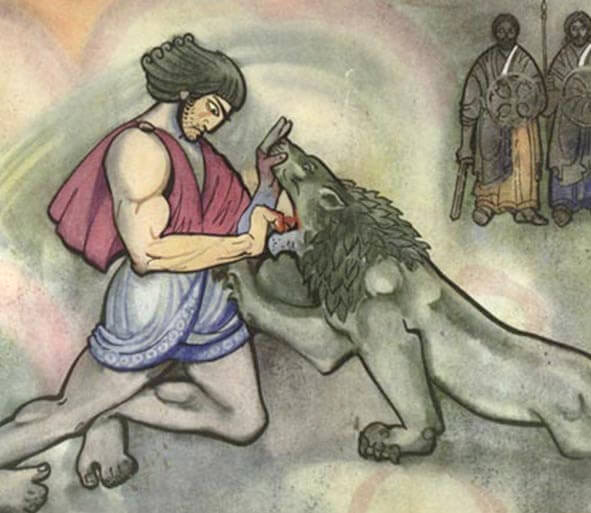Biodiversity in Armenian Culture
The page is run by the project’s volunteers Armine Arshakyan and Kristina Baghdasaryan
Armenia’s rich biodiversity has left an indelible mark on the culture, beliefs, and traditions of its people for centuries. The diverse ecosystems of the Armenian Highlands—from forests to alpine meadows and mountain rivers—not only provided livelihoods but also shaped national identity.
Armenian folklore is rich with myths and tales about nature. In the epic of David of Sassoun and other legends, animals and plants often appear as symbols or helpers. The bear, the eagle, and other native animals have become symbols of bravery, wisdom, and strength.
In Armenian art and architecture, natural motifs hold a prominent place. In the patterns of khachkars (cross-stones), manuscript miniatures, and temple ornaments, depictions of local flora and fauna are often found. Motifs of pomegranate, grapevine, and wheat, which grow abundantly on Armenian soil, have become symbols of fertility and abundance.
The traditional way of life of Armenian rural communities has always been closely connected with nature. Since ancient times, Armenians have developed agricultural practices adapted to local natural conditions. This traditional knowledge has been passed down from generation to generation, ensuring a sustainable relationship between humans and nature.
In the Armenian calendar of holidays, many celebrations and rituals are dedicated to nature and its cycles. Vardavar, Ascension, and other festivals symbolize the rebirth of nature, fertility, and the connection between humans and the environment.
In modern Armenia, there is an increasing emphasis on the need for nature conservation and sustainable development. The preservation of Lake Sevan, the forests of Dilijan, and other biodiversity hotspots has become not only an environmental issue but also a cultural one, aimed at safeguarding national heritage.
Thus, in Armenian culture, biodiversity and ecosystems are not merely natural resources but an integral part of national identity, spiritual values, and historical memory.
Ancient Times: Nature Worship and Myths
In ancient Armenia, nature had a sacred meaning. Trees, stones, and water sources often became objects of worship. In the beliefs of the pagan period, there are many deities and spirits associated with various natural phenomena and animals. For example, the image of Vahagn, the god of thunder and lightning, was closely associated with the natural elements. Vahagn always fought against evil, which was embodied in giant snakes or dragons.
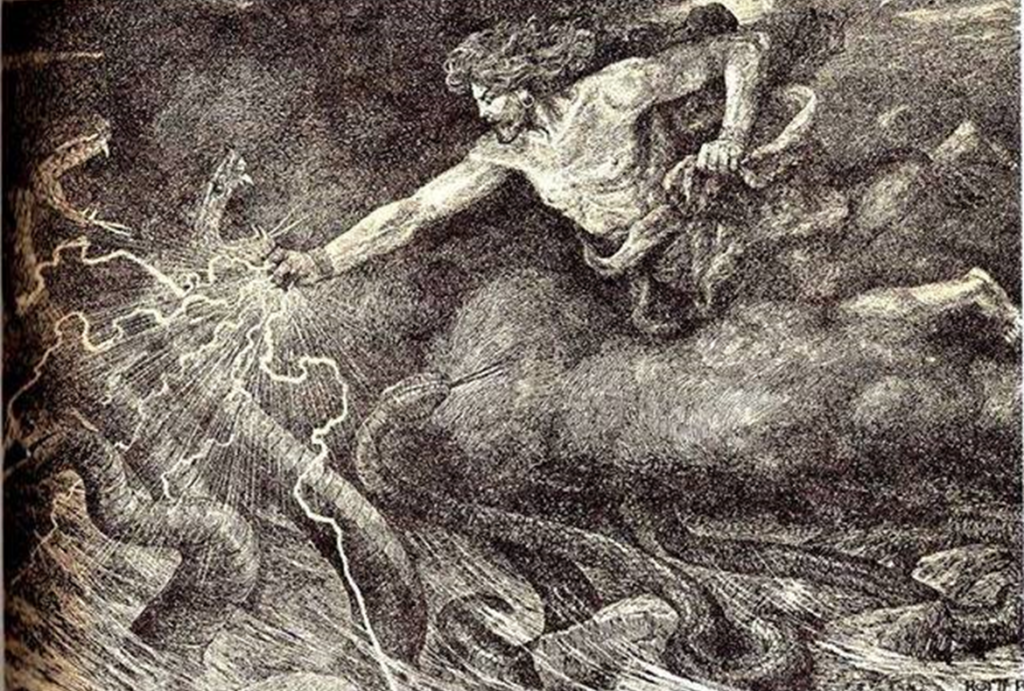
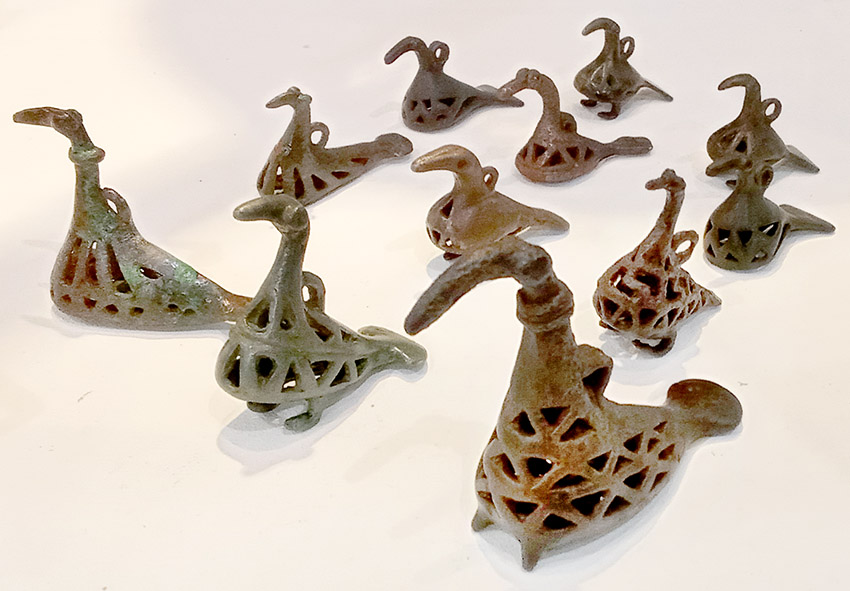
Birds, 15-14 century BC, Lchashen, History Museum of Armenia
Deer and chamois, 15-14 century BC, Lchashen, History Museum of Armenia
Wild goat, 13 century BC, Artik, History Museum of Armenia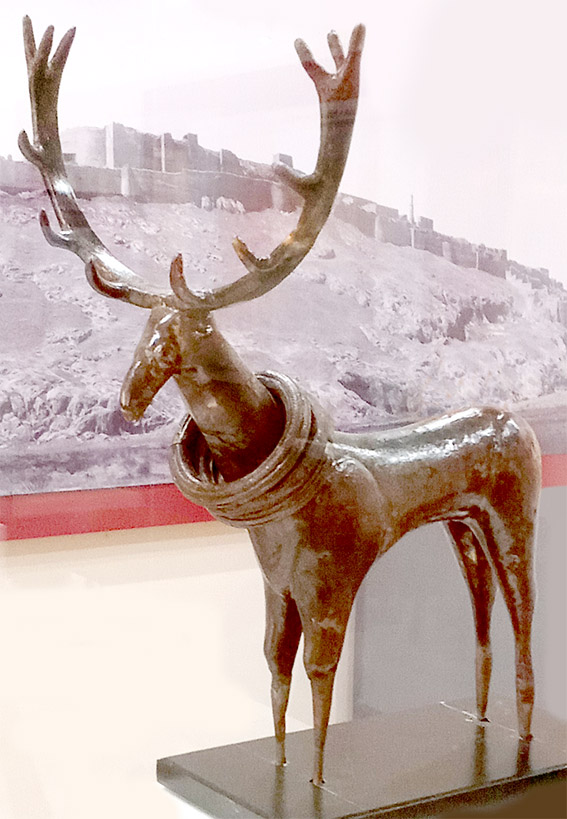
Deer, 12-11 century BC, Tolors, History Museum of Armenia Wall painting from the temple of god Haldi, 8-7 century BC, Erebuni, History Museum of Armenia
Wall painting from the temple of god Haldi, 8-7 century BC, Erebuni, History Museum of Armenia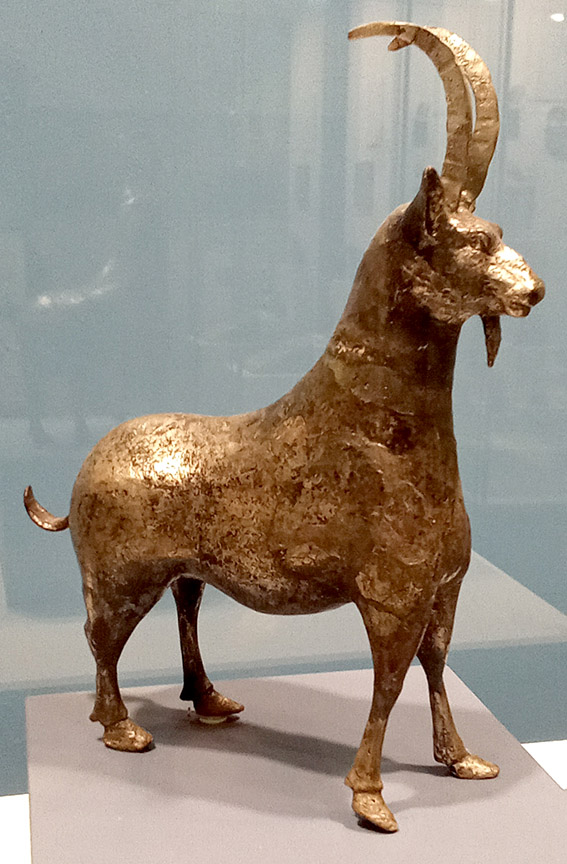
Wild goat, 2-1 century BC, Artashat, History Museum of Armenia. 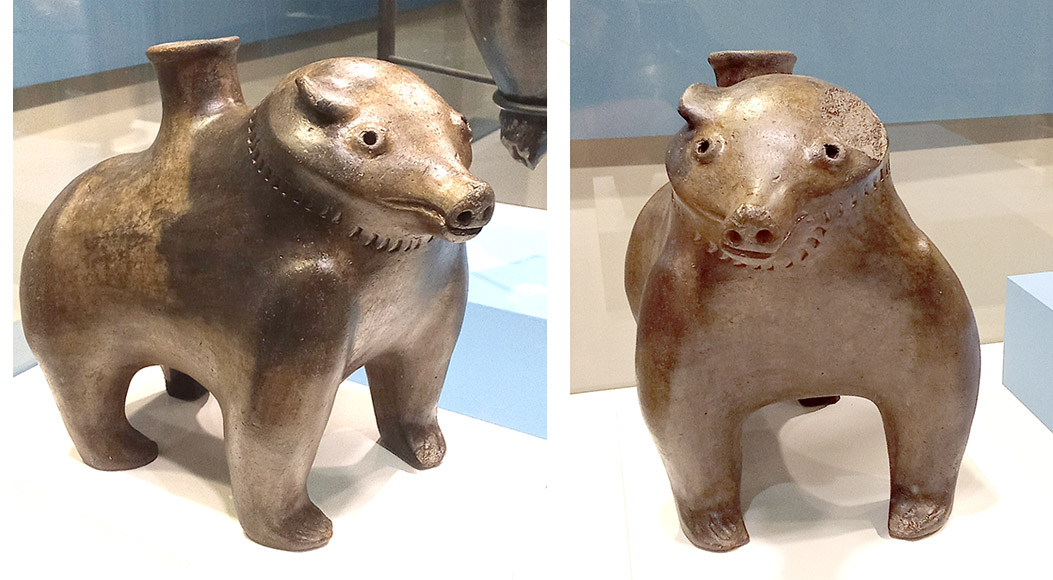 Bear-shaped rhyton, 1 century BC, History Museum of Armenia.
Bear-shaped rhyton, 1 century BC, History Museum of Armenia.
Middle Ages: Christianity and the perception of nature
After the adoption of Christianity, although the overt forms of nature worship disappeared, respect for nature and its symbolic significance were preserved. Many monasteries and churches were built in picturesque natural places, emphasizing the harmony of spirituality and nature. In miniature painting, on khachkars and other works of art, plant and animal motifs are often found, which have both decorative and symbolic (for example, the tree of life) significance. In the lives of saints and in spiritual literature, the connection of man with nature and the manifestations of God’s creation in nature are often emphasized.
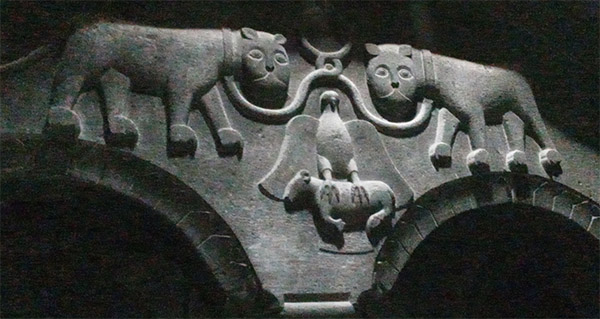
Lions. Rock temple in Geghard
 Lion in the decoration of the throne. Echmiadzin
Lion in the decoration of the throne. Echmiadzin
Doves, pomegranate, and grape on the temple portal in Geghard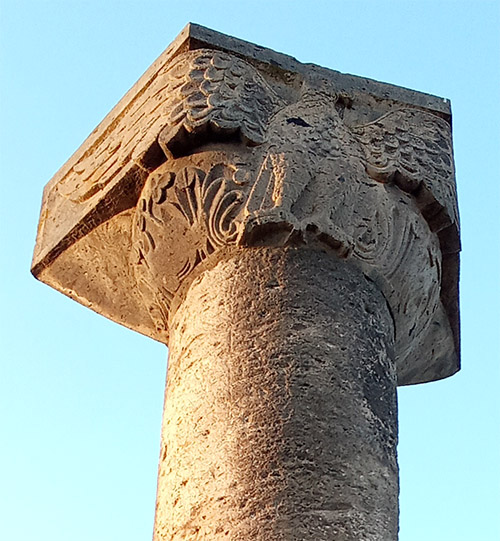
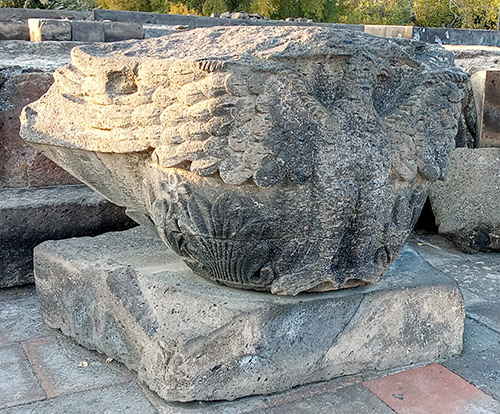
Eagles on the temple capitals, Zvartnots 
Eagle with prey, 11 century, Kecharis monastery, History Museum of Armenia  Capital, 847, Sevanavank, wood, History Museum of Armenia
Capital, 847, Sevanavank, wood, History Museum of Armenia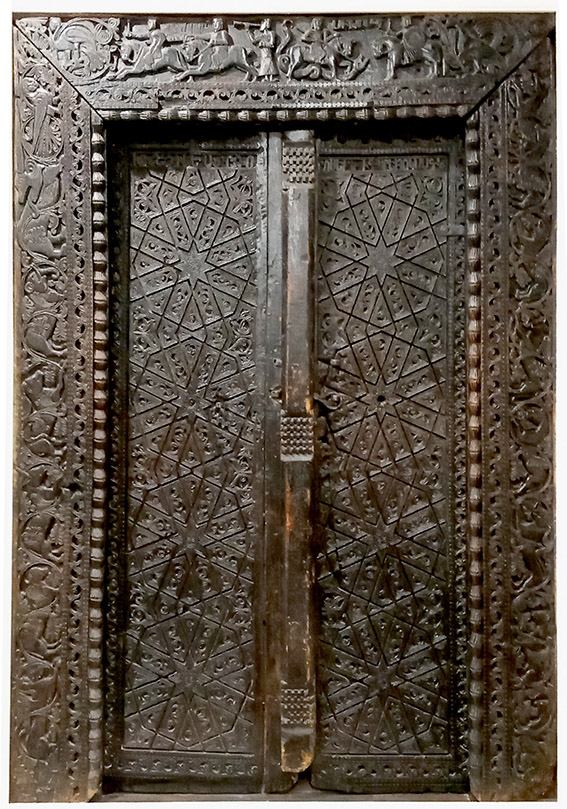

 The wooden door, Monastery in Mush, 1134, History Museum of Armenia
The wooden door, Monastery in Mush, 1134, History Museum of Armenia
Spiritual Life: Nature as a Manifestation of God’s Creation
In the doctrine of the Armenian Apostolic Church, nature is considered a part of God’s creation, full of harmony and beauty. Many spiritual figures and theologians have addressed nature in their works, emphasizing man’s responsibility towards nature and the importance of preserving it. In prayers and hymns, passages related to nature are often found, praising the greatness and wisdom of God manifested in nature.
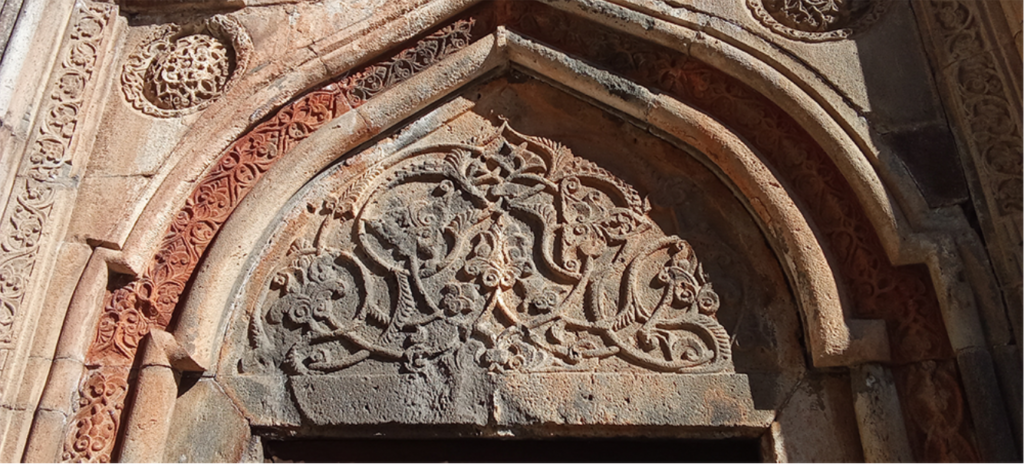
Vegetal motif on the temple portal in Geghard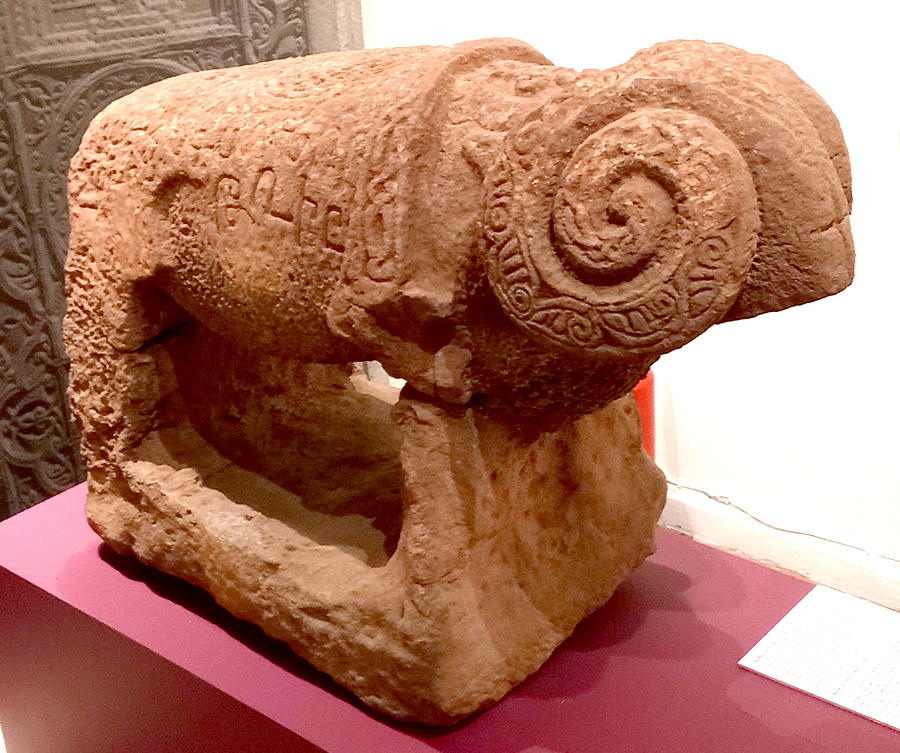
Ram-shaped tombstone, 1579, History Museum of Armenia
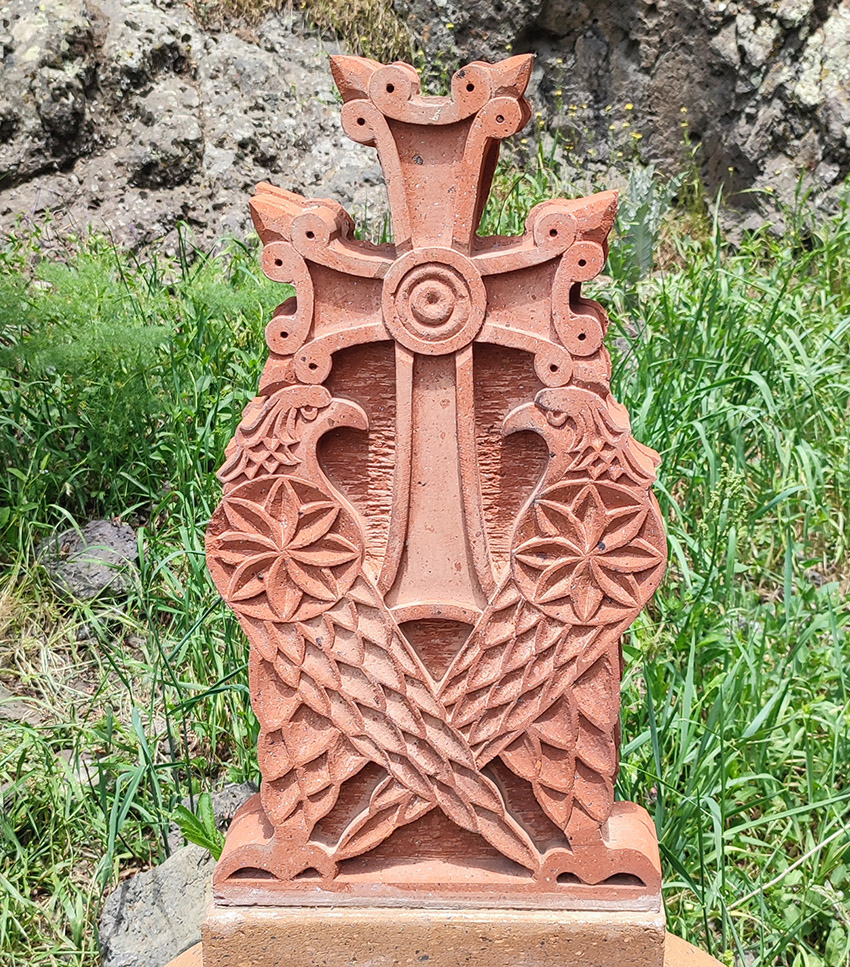

Fragments of khachkars in Tsaghkevank
Symbolic meanings
Different plants and animals have been assigned different symbols in the Christian context. For example, the dove symbolized the Holy Spirit, the peacock immortality or heaven, and the rooster awakening or the resurrection of Christ. The birds depicted in bird letters could add additional symbolic layers related to the content of the text. 

Doves on the temple portal in Geghard and inside the temple in Noravank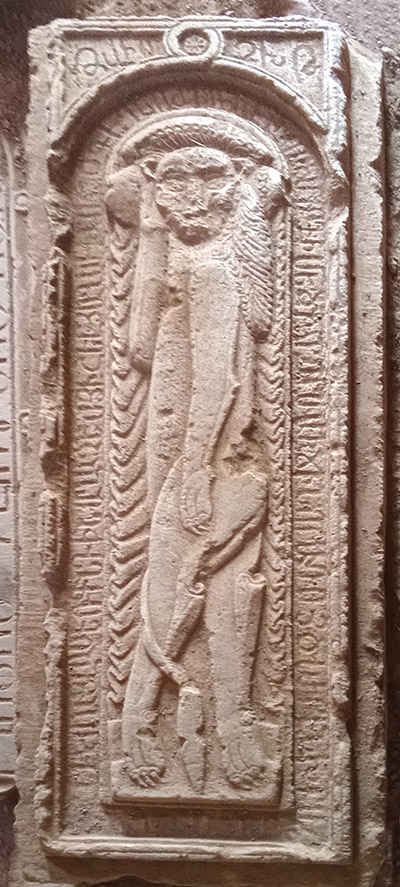 The tombstone of Prince Elikum Orbelyan, 1300, Noravank, that indicates the buried person was as strong and brave as a lion (the guide’s explanation).
The tombstone of Prince Elikum Orbelyan, 1300, Noravank, that indicates the buried person was as strong and brave as a lion (the guide’s explanation).
Bird letters: Ornate initials in Armenian miniature painting
The term “bird letters” is used in Armenian art history mainly for those large, decorative initial letters found in the miniatures of Armenian medieval manuscripts, which are decorated with images of birds. These are not only elements of the aesthetic design of the text, but also carry certain symbolic meanings. The depiction of birds in miniatures testifies to the importance given to nature in Armenian culture. Birds, as a connecting link between heaven and earth, often had positive symbols.

Bird letters in medieval manuscript (https://ru.pinterest.com/haykarjun/miniatures-armenia/)
Folklore and Ethnography: Nature in Everyday Life
Biodiversity plays a central role in Armenian folklore. In proverbs, fairy tales, songs, proverbs, and sayings, various animals and plants are often found that embody human qualities or are used to convey life lessons. For example, the fox often symbolizes cunning, the bear – strength, and the swallow – the arrival of spring and hope.
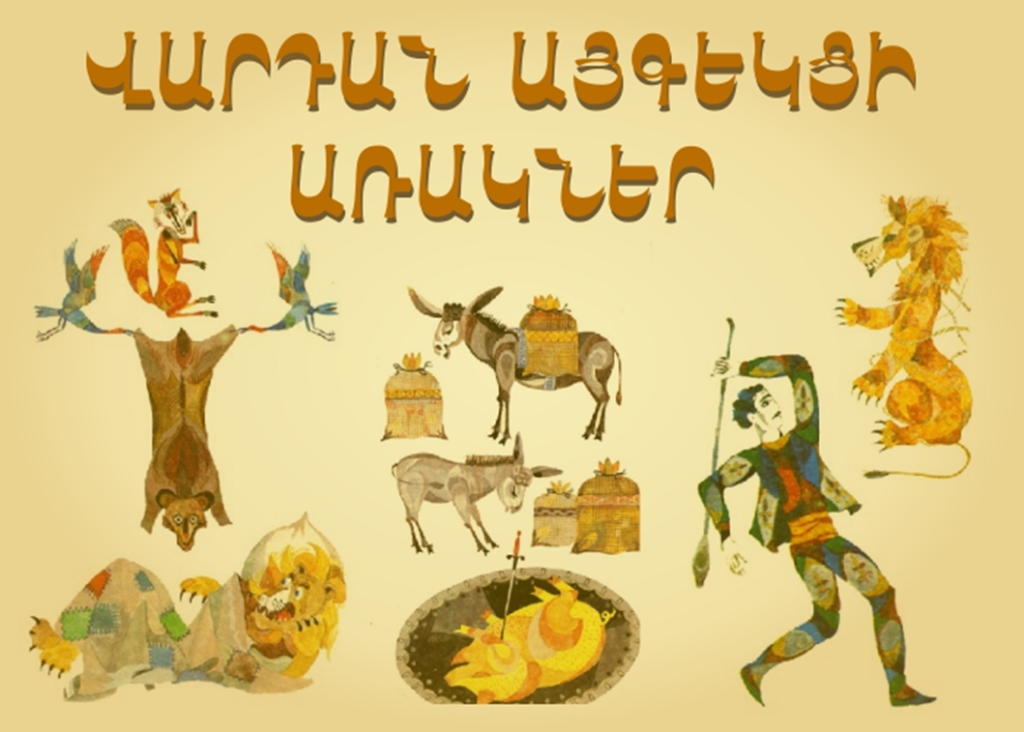
Literature and Art: The Aesthetic Reflection of Nature
In Armenian literature, from ancient times to the modern period, nature has always been an important theme and source of inspiration. Poets, prose writers, and painters have often depicted the beauty of Armenia’s natural world: mountains, fields, rivers, trees, and flowers. Scenes of nature not only created a backdrop for actions, but also expressed the feelings and thoughts of the heroes, or symbolized universal ideas. Prominent writers and painters (for example, Hovhannes Tumanyan, Derenik Demirchyan, Martiros Saryan) have devoted a large place to Armenian nature in their works.
 Midday Silence, 1924 – Martiros Sarian
Midday Silence, 1924 – Martiros Sarian
 Armenia. Martiros Saryan, 1923.
Armenia. Martiros Saryan, 1923.
The pomegranate in Armenian culture
The pomegranate have been considered a part of Armenian culture since pagan times with different important symbolic meanings:
– Fertility and motherhood. The numerous pomegranate seeds symbolize many children and the continuation of life.
– Unity. The diversity of pomegranate seeds in one fruit, as a whole, has also become a symbol of solidarity and national unity.
– Wedding symbol. In ancient times, pomegranate seeds were scattered in front of the bride during a wedding to wish for fertility.
– Spiritual meaning. Even after the adoption of Christianity, the pomegranate remained a symbol of holiness and eternal life. Images of pomegranates can be found in sculptures and miniatures of Armenian church architecture.
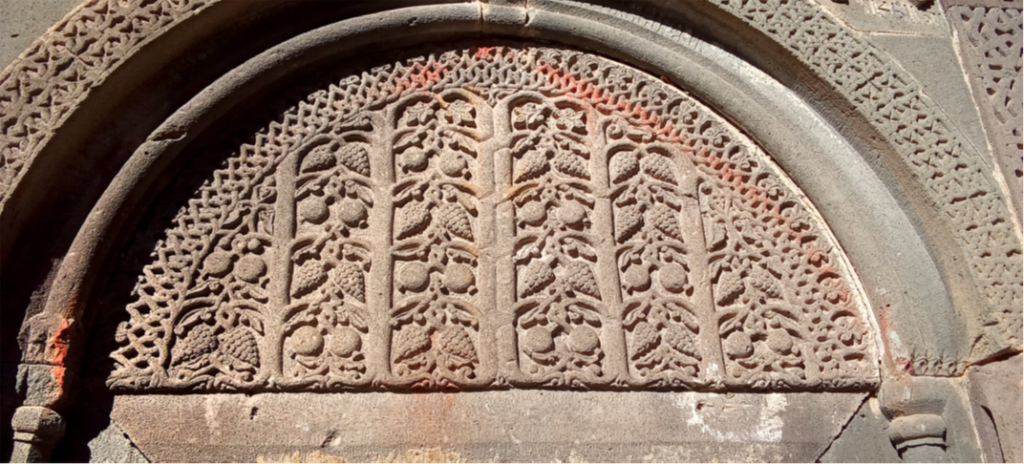
Pomegranate and grape on the temple portal in Geghard

The importance of plane tree in Armenian culture
The plane tree (Platanus orientalis), with its majestic appearance, longevity and power, has deep roots in the culture, history and beliefs of the Armenian people, becoming the bearer of numerous symbols. In Armenian folklore and beliefs, the plane tree has sometimes acted as a sacred tree, with various rituals and customs associated with it. In some places, people believed that the plane tree could help fulfill wishes, and for this reason, pieces of cloth were tied to the branches of the tree. Sometimes the plane tree was considered the abode of nature spirits or the spirits of ancestors. The attitude towards the plane tree was one of care and respect, and damaging it was considered a sin or an act that brought misfortune.
Images of domestic animals and plants
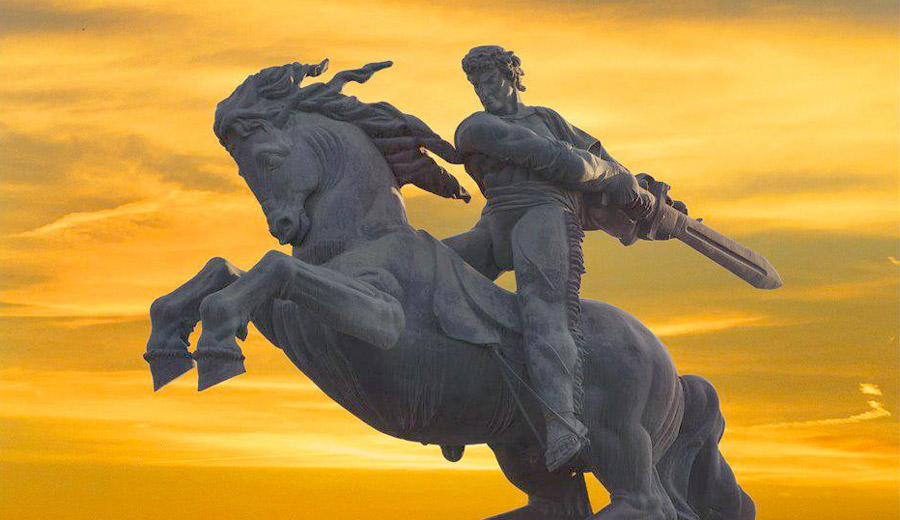
Monument to David of Sasun in Yerevan
In progress…
Bird letters
https://barevarmenia.ru/tourinfo/chudo-armyanskogo-alfavita/
https://sarkissirakanyan.wixsite.com/sarkissirakanyan/alfavit-slovar
https://www.armmuseum.ru/news-blog/2022/9/7/-it-is-what-makes-armenia-different-armenian-alphabet#:~:text=%D0%9D%D0%B0%20%D1%81%D0%B0%D0%BC%D0%BE%D0%BC%20%D0%B4%D0%B5%D0%BB%D0%B5%20%D0%B1%D1%83%D0%BA%D0%B2%D1%8B%20%D0%B0%D1%80%D0%BC%D1%8F%D0%BD%D1%81%D0%BA%D0%BE%D0%B3%D0%BE,%D0%B2%20%D0%A1%D0%BE%D0%B5%D0%B4%D0%B8%D0%BD%D0%B5%D0%BD%D0%BD%D1%8B%D1%85%20%D0%A8%D1%82%D0%B0%D1%82%D0%B0%D1%85%20%D0%B8%20%D0%9A%D0%B0%D0%BD%D0%B0%D0%B4%D0%B5.
